
It’s 2023, but you’re still packing like it’s 2003 (remember those “dark days of travel” before smart luggage and iPhones and instant language translators were a thing?). Despite the horrors of modern air travel, it’s way easier these days to get organized for your next trip. With the right gear — including smartphone apps, a good set of packing cubes, and proper packing techniques — you can get ready for the airport in no time.
Of course, you first need to know where you’re headed and for how long. That will dictate the type of bag or bags you’ll need. There are a few common tips for packing no matter what type of luggage you’ll be toting. But we’ve found that each type of bag — whether it’s a carry-on, a traditional rollaboard suitcase, your best travel backpack, or some combination of all three — also requires a unique packing technique. Here’s the low-down on our favorite tips and tricks for packing like a pro. (Note: This list is geared toward air travelers, but the tips we’ve laid out apply to pretty much any traveler, no matter how they plan to get to their final destination.)
Choosing the right travel bag
There is no best travel luggage. It’s all about what’s right for you. It depends on how you like to travel, what you most often do when you get there, and whether you value convenience over portability. Whichever you choose, here are a few things to consider when deciding on the right bag for your next trip:
- Travel backpacks: Backpacks offer maximum portability, no matter whether you’re traveling in airports, over city streets, on overnight train rides, or on a day hike. They typically feature more pockets, pouches, and sections than a traditional suitcase, too, which makes them ideal for travelers who like to keep everything neatly organized. Best for: Modern nomads who like to move freely on multi-destination trips.
- Traditional rollaboards (checked and carry-on): As the name implies, rollaboard luggage means any luggage with wheels. These are most often the typical clamshell design with a zippered opening that almost everyone travels with these days. On the downside, they’re typically heavier and offer fewer organizational options than a travel backpack. Their best selling point is the ability to wheel them from A to B, which can seriously save your back on long travel days. Best for: Single-destination vacationers who typically only take their luggage from home to the airport to the hotel and back again.
- Duffle bags: Duffel bags split the difference between travel backpacks and roller luggage. They’re often larger than a backpack, which is great for heavy packers. They can also be thrown over a shoulder or carried by hand in a pinch. On the downside, they don’t (usually) feature wheels, which can make them cumbersome on long-haul trips that require carrying your personal belongings long distances in airports, between hotels, etc. Best for: Travelers who sometimes plan multi-destination trips but also take the occasional flip-and-flop-style vacation each year.
Many travelers keep one or more of each type of bag at the ready, and most travel with some combination of these bags rather than just one style.
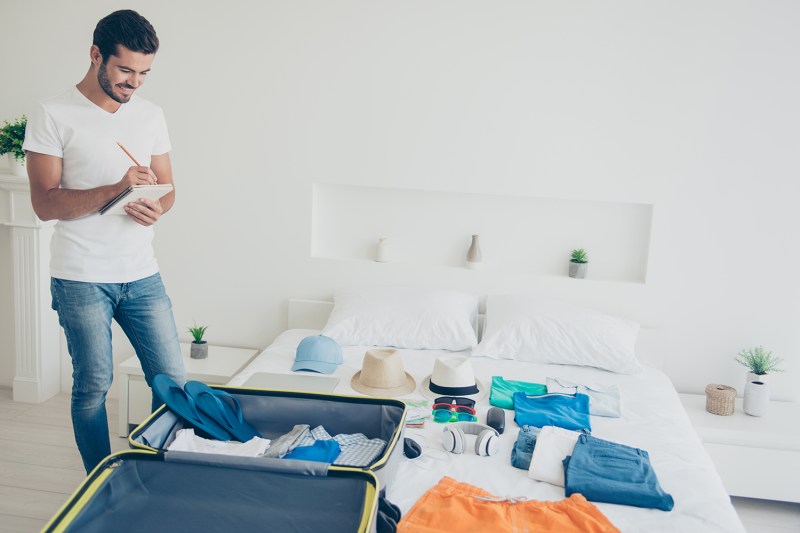
Prepare for proper packing
There are some universal tips we recommend for every traveler, no matter where they’re headed, for how long, or what type of bag they’re rocking. Before you even start packing, consider these:
Make a list, check it twice
If you’re the sort of YOLO (you only live once) traveler who “wings it” when it comes to packing, there may be no hope for you. Sorry. Blindly loading your suitcase with everything you might need guarantees you’ll be lugging around a much-too-heavy bag full of mostly useless wares that you’ll probably never take out of your luggage.
The trick is to create one master list of every item you might ever travel with, including winter wear, beach gear, photography equipment, gadgets, toiletries, prescription medications — everything. Work from that same list at the start of every trip, crossing off and deleting things as you go based on the type, destination, and duration of your journey. This ensures you’ll never forget any of your best travel essentials.
It’ll be boring. It’ll seem tedious at first. But it’s way more efficient than packing on the fly and getting frustrated when you arrive only to suddenly remember all the things you forgot to pack. Need some extra help organizing? Try a mobile packing app to help walk you through your trip needs step by step.
Packing tips for air travel
Fewer baggage fees and a lighter luggage load make for a better travel experience. Smart air travelers know that one way to save big on baggage fees is to wear or carry as much of their luggage on their person as possible. Once you have a list of everything you need to take with you, consider which pieces can be worn on the plane. In particular:
- Wear bulky, valuable, or “awkward to pack” apparel on the plane. Think Jeans, sunglasses, and jewelry.
- Don heavier footwear (like hiking boots), but pack lighter sneakers or sandals in your luggage.
- Wear your sweater and/or jacket (then ball it up and use it as a pillow on the plane) instead of cramming it into your luggage.
This isn’t always practical, of course, but it can be a clever way to save space and weight. If your trip involves any formal events, check out our tips for how to pack a suit when you’re traveling light.
Divide and conquer
Now, it’s time to get packin’. If you’ve yet to experience the wonders of packing cubes, now’s the time to get on board (get it?). Packing cubes make it a snap to organize the loose bits in your luggage: Underwear and socks in one cube, T-shirts in another, and loose cables, memory cards, and miscellaneous tech bits and electronics in the third. For around $20, you can score a set of nylon packing cubes (typically sold in threes) from Eagle Creek, REI, or Amazon .
Packing cubes make loading and unloading your bag infinitely easier on the road. In most cases, using a trio of cubes makes it possible to completely unpack and repack your entire bag in less than 30 seconds. As a bonus, they help streamline the process of TSA tossing your luggage during random “secondary screenings.” That way, you’re not scrambling to repack your entire carry-on at the security checkpoint.
For your best travel clothes and garments where wrinkling is an issue, like dress and collared shirts, Eagle Creek’s Pack-It Specter Garment Folders are lifesavers. On the other hand, if you’re unconcerned with wrinkles, traditional stuff sacks work almost as well as packing cubes but pack down smaller when empty. Plus, they’re great for stowing dirty laundry on your flight home. Just toss a dryer sheet in with your sullied drawers to keep things mostly fresh.
Pack right, pack tight
There are two main schools of thought for packing your travel clothes: Rolling and folding. It’s a hot-button issue that’s highly debated among hardcore travelers. The truth is that neither is “best” because it depends on the article of clothing.
In general, it’s best to roll soft garments and fold stiffer ones. This requires a bit of trial and error based on your wardrobe. Either way, be sure to pack your clothes as neatly and tightly as possible. This ensures the fabric doesn’t shift in transit and helps stave off wrinkles.
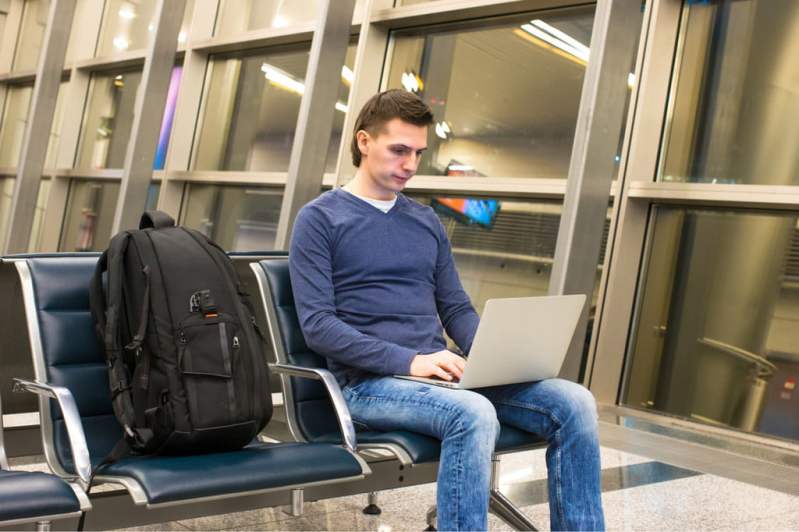
How to pack a travel backpack
The rise of the bare-bones “Basic Economy” class of air travel — in which most airlines allow passengers to take only the luggage that fits beneath the seat in front of them — has polarized travelers. But, if you know how to pack a backpack like a boss, you can save big on airfare. For short-haul and weekender flights, it’s a cakewalk. For anything longer (say, one week or more), you’ll need to get creative.
Choose the right kind of backpack
First, start with the best backpack for all your travel needs.
- Size: Get a bag that provides the maximum packable storage space. This varies slightly by airline, but the dimensions are similar.
- Check airline dimensions: On Delta, for example, the space is roughly 22 inches by 14 inches by 9 inches; on Southwest, it’s 20 inches by 17 inches by 11 inches. Expect less room next if you’ve booked a window seat.
- Exterior pockets: While it seems minor, invest in a backpack with a couple of small, exterior pockets for stashing frequently needed items like your passport, wallet, and phone.
- Two-in-one: A backpack that converts to a duffel-style carry with a single longer shoulder strap is convenient, too.
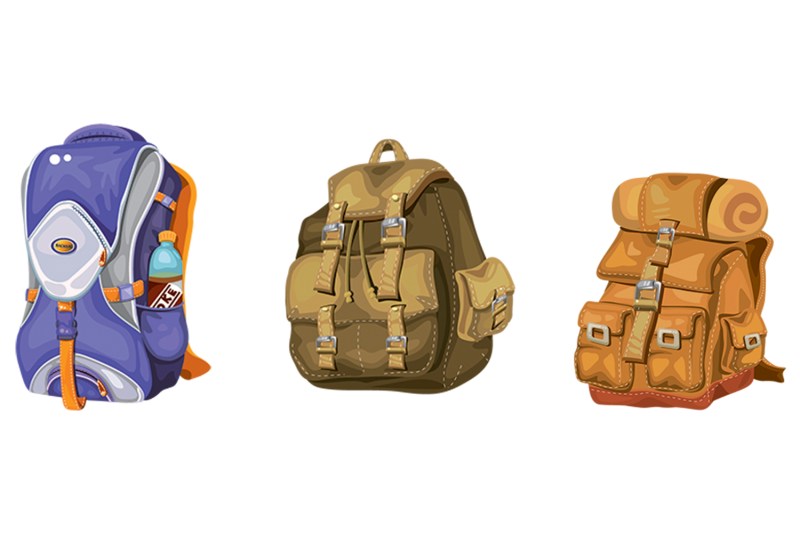
Tips for packing roll-top backpacks
Most backpacks feature one of two layouts. For a roll-top or cinch closure, where everything fits through a single opening near the top, pack it like you would a duffel bag:
- Pack light: Pack only what you absolutely need. Be ruthless: If you’re not certain you’ll use it, leave it out. You’ll appreciate the value of going as light as possible. If you realize you need something you didn’t pack, you can probably buy it at your destination.
- Shoe hack: To maximize space, fill your shoes with small, nonessential items.
- Pack heavy to light: Place your heaviest and least essential goods in first, at the bottom.
- Rolling method: Roll your clothes and pack them tightly side by side to create the next vertical layer.
- Packing cubes: Place smaller, more essential items on top of everything, nearest the top opening. Again, packing cubes come in handy to ensure these bits don’t get lost in transit or work their way to the bottom of the bag, never to be seen again.
- Use exterior pockets: Finally, stuff the smallest, most essential items into the exterior pockets. This includes your passport, phone, snacks, and headphones — anything you may need in during your flight.
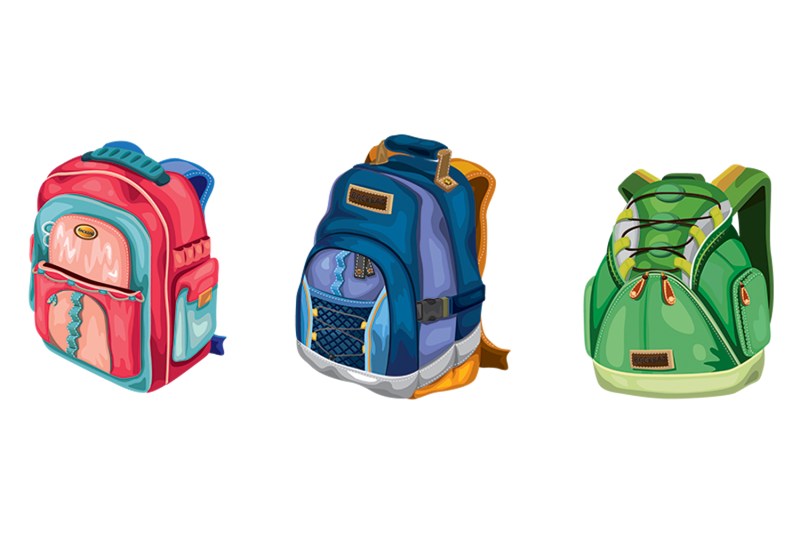
Tips for packing zipper backpacks
Backpacks that feature a butterfly-style layout with a zipper that opens wide on three sides provide easier access to the contents. In this case, follow these simple tips:
- Minimalist packing: Without the aid of wheels, you’ll be forced to carry the full weight of your luggage through airports, train stations, and in (possibly long) lines at customs.
- Distribute weight: Keep weight to a minimum and stow heavy goods near the bottom to help distribute the load. This includes things like shoes, bulkier pieces of clothing, and miscellaneous heavies like that bottle of Scotch you can’t leave home without.
- Rolling method: Backpacks rarely allow for the folding method of packing clothing. Instead, roll clothing and place it tightly atop the heaviest/bottom layer near the middle of your backpack. This ensures medium-weight goods are near the center of your back for a more balanced load.
- Use outside pockets: Organize smaller goods into the remaining outside pockets. It’s easy to assume related items should be grouped together (e.g., electronics in one pocket, snacks in another). However, it’s often smarter to pack in terms of convenience and location. When passing through airport checkpoints, for example, you’ll want ready access to your laptop, liquids bag, and pocketed goods. These items can be grouped together to streamline your move through security. Once through the checkpoint, you may want to grab your headphones, wallet, water, and an energy bar, which could all be grouped together in a separate pocket.
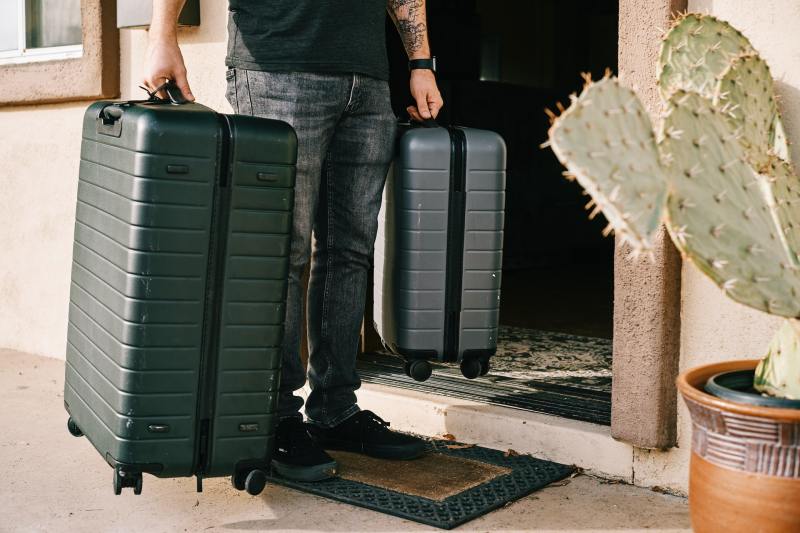
How to pack a carry-on travel bag
Next time you’re packing a piece of carry-on luggage, remember these tips:
Rolled clothing
When packing carry-on luggage, start with rolled (not folded) clothing — jeans, cotton pants, and knit sweaters all pack well when rolled. These should line the bottom two-thirds or so of your carry-on.
Folded garments
Next, neatly folded garments, like dress shirts and pants, atop the rolled bottom layer. Drape this entire “base” clothing pile with a dry cleaning bag to keep the top folded layer of clothing from getting caught on anything and turning into a wrinkled mess.
Belts
Depending on the material, roll belts into a coil and tuck away wherever they fit, or snake them around the outside of your clothing to keep them straight.
Shoes
Wear your heaviest pair of shoes on the plane. Stuff the inside of your extra pair(s) of shoes with leftover bits (especially anything fragile like watches or sunglasses). Wrap any additional pairs of shoes in a gallon Ziploc bag or reusable stuff sack and place them to the side of your clothing pile, ideally near the wheels, to better balance the weight of your bag.
Packing cubes
Last, fill any remaining gaps with the aforementioned packing cubes so the contents of your suitcase are tight and unlikely to shift.
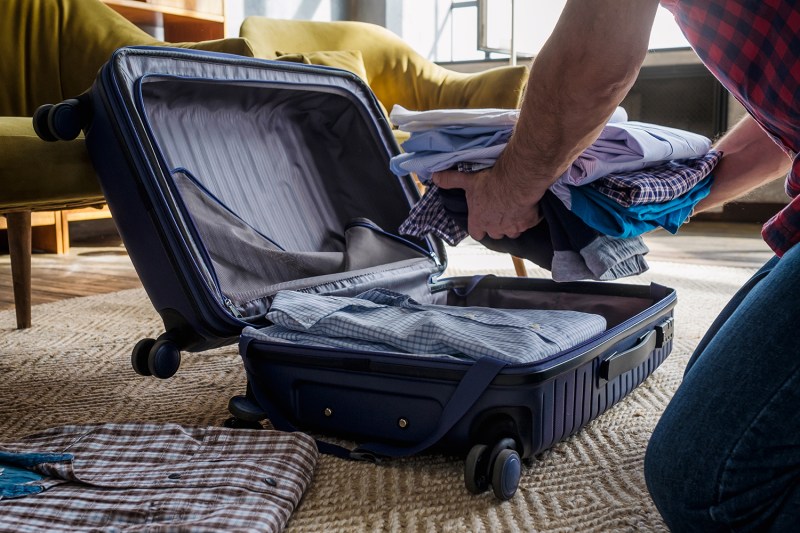
How to pack a suitcase or checked bag
For larger suitcases and checked luggage, the same tips for packing carry-on bags apply. The only difference is that you’ll have more room. It’s tempting to want to pack more because you can fit more. But remember: Traveling light is traveling happy. It’s amazing how quickly a full-sized bag can go from 10 pounds empty to more than 50 pounds when it’s packed to the gills. This makes your luggage harder to roll and could result in pricey — sometimes exorbitant — overweight baggage fees.
Take only what you need. Unless you’re traveling to the North Pole, there will be stores at your destination. If you forget anything that you absolutely can’t live without, you can probably buy it when you get where you’re going.
To better balance your bag, start packing from the side with the wheels. Pack your heaviest bits closest to the wheels, then your mid-weight belongings next, then your lightest gear closest to the top handle. With most of the weight near the bottom over the wheels, your bag will roll easier and be less likely to tip over. For checked bags, also make sure to use a TSA-approved lock. That way, if airport security needs to open your luggage, it won’t be with a pry bar and a hammer.
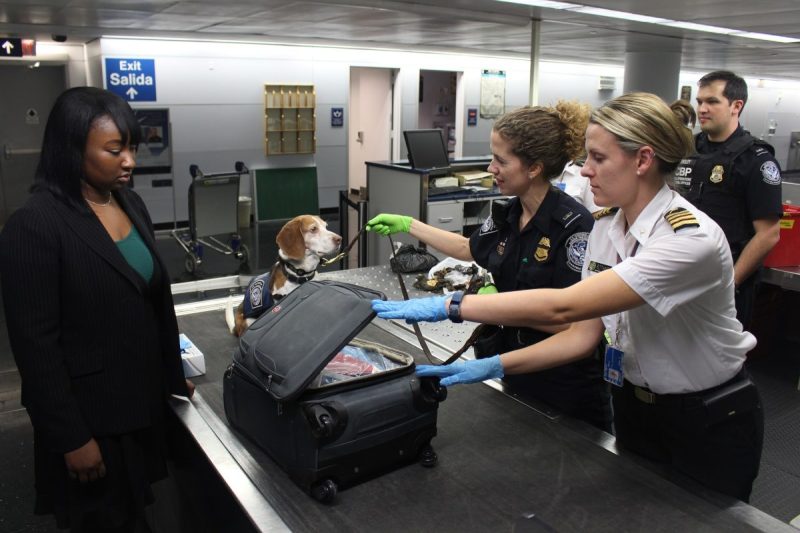
A few final travel tips
Be prepared for airport security
For outbound and return flights, be aware of everything you’ll need to remove from your luggage to pass through airport security. At the moment, this includes your one-quart bag of liquids, laptop, any electronics or travel gadgets larger than a smartphone, and any loose objects in your pockets (like keys and spare change). Keep all of these in a single messenger bag or backpack to easily dispense with them in the TSA bins, then quickly retrieve them on the other side of security.
Last-minute travel tips
Of course, if you really want to breeze through airport security like a pro, sign up for any of the U.S. government’s official trusted traveler programs like TSA PreCheck or Global Entry. The average wait time for enrolled travelers is just 5 minutes!
Editors' Recommendations
- Visiting the Grand Canyon? Your complete guide for a Northern Arizona road trip
- This must-have travel accessory is nearly weightless and costs less than $55
- Here’s everything you need to pack for a trip to Yellowstone National Park
- What to bring on a plane: Experts reveal what should always be in your carry-on
- Not sure how to get over jet lag? A new report reveals Qantas has cracked the code




